Click to view our Accessibility Statement or contact us with accessibility-related questions












Fink Different: Keyboards as counter-culture.

search
close
Sort by: Newest
keyboard_arrow_down
Aristarco
209
Nov 8, 2024
I always hear about people making keyboards and when I read the stories, they only build a keyboard using PCBs or PCB/Materials provided by someone in a kit form. "I built this but used this switch instead." I know a lot of people will hate me for this comment but for me that's not making keebs. That's assembling and modding. Even the word modding feels like too much. And that's because I've read about people really making and modding. People that don't like what's out there and makes the PCB from scratch, planning the position of every switch or the use of this or that microcontroller to make it work based in what they want from it. People that mod by cutting or melting or chemically treating the keycaps or the cases, cutting and mending the PCB, etc.
I read about a steampunk guy that used a heated tube to cut the stems from an old IBM keeb keycaps to glue shirt buttons with brass rims to make them look like ancient typewriter keys and making a new case with brass and wood that looked nothing like the original. Now that's modding! Disruptive and rebellious!
And that's what made me start making keebs to see how much I can push the boundaries. Not so much at the beginning but I'm improving with time. The very first I made was received with mixed reviews in reddit but I felt so good I keep making them. Disrupt and rebel, mates!!
https://www.reddit.com/r/MechanicalKeyboards/comments/164iqaq/i_made_a_30/?utm_source=share&utm_medium=web3x&utm_name=web3xcss&utm_term=1&utm_content=share_button

storyboardtech
490
Keyboard Club Member
Nov 13, 2024
AristarcoThis is awesome! Thanks for sharing. I'm totally going to check that out. Have a good one!

Aristarco
209
Nov 8, 2024
"...in 1963 Revell paid Roth 1 cent for every one of his model kits sold and that he was paid $32,000. Thirty-two thousand models is nothing to sniff at."
32K models? If my math is not that dusty and rusty, if paid 1 cent for every kit sold, to get 32 Grand, they sold 3.2 million kits, not 32 thousand. Now, 3.2 million models is nothing to sniff at, not at all!

storyboardtech
490
Keyboard Club Member
Nov 13, 2024
AristarcoThank you! I am deeply math deficient, and you're right. 3.2 million kits is amazing. From his website "Here is a very interesting note: During 1963 Revell paid Ed “Big Daddy” Roth a one cent royalty for each model sold. Ed brought in $32,000 that year in royalties. Now figure out the math. That’s how popular Ed “Big Daddy” Roth creations were."
(Edited)
KeenKong
19
Nov 7, 2024
The irony of talking about counter culture artists while using AI "art" is astounding. C'mon Drop, do better.

storyboardtech
490
Keyboard Club Member
Nov 13, 2024
KeenKongHey hey! Don't blame Drop, my guy. Entirely my doing. To be honest, this is the first of my articles where I tested out using AI art, specifically because of its' edgy, boundary-blurring nature. And my desire to not hand-draw or paint an image of Ratt Fink clicking away on a keyboard. Personally, I thought it was funny. I am curious, have you found the use of AI in art to be culturally acceptable or mainstream?

mouse_md
16
Nov 7, 2024
It's disgusting when artists are plagiarized like this. You can't call AI art "a fan work" when it's not possible for AI to be a fan.
PRODUCTS YOU MAY LIKE
Trending Posts in Mechanical Keyboards

RealRage_TV
software?
Hi I'm new to Drop and i just received my Keyboard i have been waiting for months for by Drop x MTN Dew x Borderlands movie and didn't know if there was a software like Logitech's for the keyboards. if anyone could help please let me know
Nov 20, 2024

jdsvdropper
Drop ENTER keyboard with DCX Sleeper Mac variants and Rocky Bird
Black Drop ENTER keyboard with DCX Sleeper Mac variants for the Option and Command keys, and Rocky Bird red and black DCX keycaps.
Nov 19, 2024
AngryTank
Favorite Artisans
COME FORTH SHENRON!
Purple, Dragon Balls, and Seta! What more does a simple man need?
Nov 17, 2024
InsufferablePedant
ZealPC Aqua Zilents
Please ignore the filthy keyboard, it's been on a shelf for a minute.
Nov 15, 2024
Kyle-L
How to sell things on Drop & How Drop charge them?
Hi , this Kyle from China. Since a month ago, my team wanted to build a brand to produce the high quality of mechanical keyboard and headset to sell aboard. Now we already got the license to do so, and we can't wait to bring our products to meet everyone. But the products are still in the period of designing, it would take some time :( There are some questions we can't find the ways to solve - how to sell keyboard on Drop, and the details about how Drop charge per product? - Actually I sent an email to Drop Studio for some questions, but I didn't receive the answer.( Drop Studio also mentioned that they can contact me only if they were interested in my design / products ). So I'm here ask for help. If anyone can answer my question, I would really appreciate it :)
Nov 14, 2024
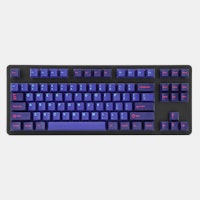
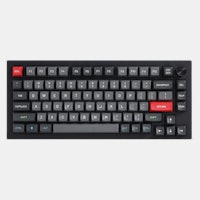
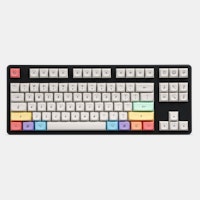
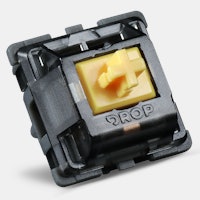

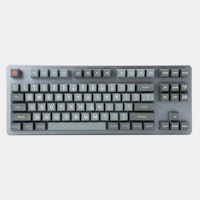
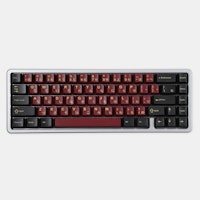
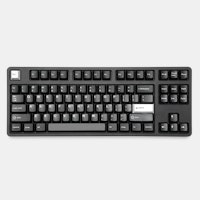
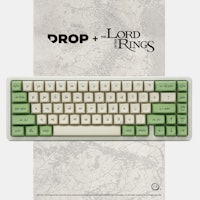







Rebels with a cause Customization, by definition, implies that what’s been given is not enough. Not good enough, not personalized enough. Not cool enough. The early days of cell phone jailbreaking had this nailed. It’s not that the base product is bad. In many cases, it’s absolutely fine… for the normies. For those that don’t want to take it further. But if taken far enough, if it gets popular enough… the custom does something insidious. It presents itself alongside the original as a viable alternative. Unique, one-of-a-kind modifications never do this. It’s not their purpose. One-off modifications rather, exist to better the life of one individual by tailoring a product to their needs. My neighbor’s lawn mower with a cup holder mounted on the handle leaps to mind, but like most modifications it's pretty specific. Most folks with a push mower don’t feel the need to have a beverage so easily at hand. That said, many mods become alternatives, and just as many supplant the original. It seems to me that one of the necessities for mods or customs to grow in popularity is that they need to be just as accessible as the original, or even more accessible. For example, jailbreaking worked because it was free and could be executed by anyone with a basic knowledge of computing. So how in the world did Ed Roth become a household name? How can painstakingly imagined and crafted, one-of-a-kind cars become accessible to the public? The answer was Revell models. Revell, an American-founded plastics company made their name in the mid 1940’s and 1950’s creating model trains, military vehicles, and automobiles. According to Wikipedia’s history of Revell “starting in the late 1950s, model kits began to veer away strongly from stock presentations and focus on customizing, hot rodding, and racing. The 1960s solidified this direction with almost infinite variations in how a kit could be built. This trend showed both the extensive new marketing reach of the hobby as well as the pervasive individuality portrayed in American car customizing. Model companies hired big name customizers to create new and striking designs. Just as AMT had hired George Barris and Darryl Starbird, Revell hired Ed "Big Daddy" Roth about 1962 as their new stylist… Roth created the bubble-glassed "Beatnik Bandit" (later made even more famous when produced by Hot Wheels), the double engined "Mysterion", the asymmetrical "Orbitron", the "Outlaw" (a highly styled T bucket), and the "Road Agent". Apart from wheeled wonders, arguably his most famous creation was the "Rat Fink", an anti-Mickey Mouse figure.” To put into perspective how successful Roth's hot rod models were, in 1963 Revell paid Roth 1 cent for every one of his model kits sold and that he was paid $32,000. 3.2 million models is nothing to sniff at.
So, are we cool? What’s interesting to me is that a handful of kustomizers, crafting unique creations, could inspire thousands of like-minded individuals who might not be able to afford the materials or know how to create their own car, but they could buy a model. That produced an interesting dichotomy. Their kustom creations weren’t a true alternative because the modification (a tiny cheap model) couldn’t present itself alongside the original (the buyer’s car). Instead of changing the actual culture, this created a sub-culture, or more accurately because of the rebellious nature of these hot rods, a counter-culture. Today, mechanical keyboards hold onto their counter-culture status through our rebellious prioritization of aesthetics/sound/quality over sleek/slim profiles and dirt-cheap pricing. The fact that mechanical keyboards are becoming more accessible through more and more affordable options means that it’s only time and popularity that can or will drag keyboards back into the mainstream. Until then, we can hold onto our coolness like late nineties Green Day fans. We can do better. All this said, our hobby is still too homogenous in my opinion. I scroll through seemingly endless cookie cutter keyboard videos on Instagram. There’s so much conformity and to be honest, use of keyboards as status symbols. Sure, there’s a thrill of owning a hard-to-find keyboard or expensive grail, but the boards that stop me in my shoes at meet-ups are the truly unique, trend-bucking hot rods. "Vomit" keyboards where every keycap uses a different switch... keyboards built into physical skateboards... 40% and smaller builds that push the boundaries of usability. Perhaps the most prevalent (and one I fall prey to) standard I find is that keyboards need to be “attractive”. I’d personally like to see more scratches, more dents, more grime, more punk. I’m thinking in this direction right now and look forward to sharing some of my creations soon. Not that I have the right of anything, I just want to see more innovation, and I think that sometimes we give “new and shiny” too much credence. A few years back, Bang & Olufsen asked its users to send pics of dents and scratches on their products with the story of how it happened. I don’t know if I ever loved a brand more than I did in that moment. Rather than using their platform to push replacement purchasing, they were celebrating usage. Oh that we might be more forgiving of signs of use in the products we love! Age ain’t kind. Scuffs don’t reduce something’s value unless we allow our perception of value to be skewed by newness. If seen realistically, scratches and dents are a sign of a product’s true value: Usability. As always, I want to kick it back to you. Your comments, thoughts and feedback may this a community space, not just a lecture. Tell us about your collection of counter-culter hot rods. Do your keyboards fit in more with the rebel alliance, or the Empire? Thanks again for giving me this platform to share my thoughts, and remember to keep finding the stories in everything you do.